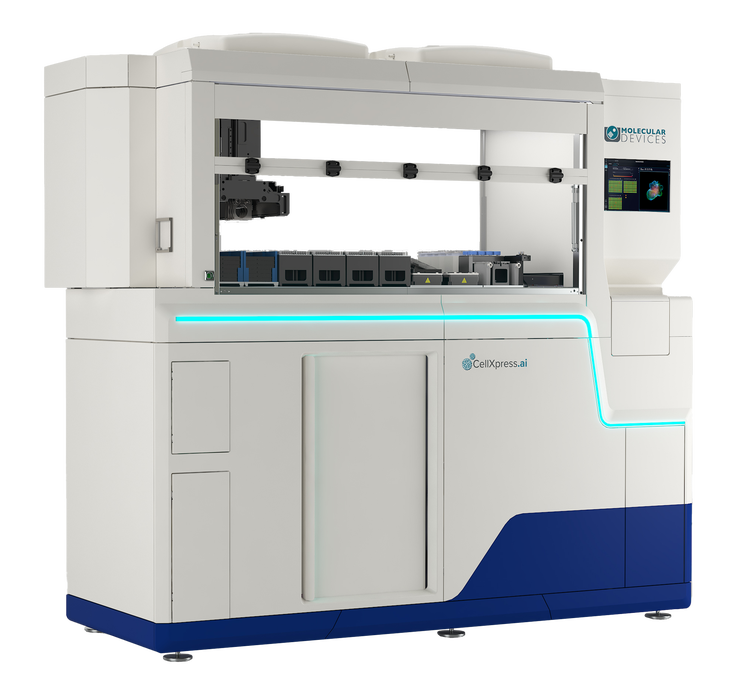Spatial Biology

What is Spatial Biology?
The body's building blocks mediate essential biological processes dynamically by interacting with each other as they move within their native microenvironments. Spatial biology studies the organization and movement of cells and molecules to elucidate mechanisms in health and disease.
This field provides critical insights into tumor microenvironments, proliferation, metastasis and abnormalities in tissue architecture. Unlike single-cell approaches, spatial biology focuses on positional information, enabling precise gene expression mapping, protein localization, morphology, clustering and migration, impacting disease progression.¹
Spatial biology encompasses several subfields collectively known as spatial omics. These include:
- spatial transcriptomics, which maps transcriptional activity across tissues²
- spatial proteomics, which localizes proteins, antibodies and biomarkers³
- spatial genomics, which identifies genomic architecture in the nucleus and variations throughout tissues⁴
- spatial metabolomics, which profiles the distribution of metabolites such as sugars and lipids⁵
Core Concepts in Spatial Biology
Spatial profiling and phenotyping
Spatial biology aims to profile biomolecules directly in situ, retaining their positional context within tissues. This process, called spatial profiling, captures the distribution of genes, transcriptional machinery, proteins and metabolites across cell or tissue samples while maintaining tissue integrity. ⁶
Spatial phenotyping, which identifies and classifies cell types based on their organization and interactions with their microenvironments, is closely linked to spatial profiling. ⁷
These approaches collectively provide an integrated view of tissue organization and cellular diversity.
Spatial atlas and spatial context
Advancements in high-throughput spatial biology gave rise to spatial atlases, catalogs of molecular and cellular landscapes of healthy and diseased tissues. These atlases provide frameworks for comparing tissue and cellular organization across individuals, conditions or experimental models. By integrating large-scale spatial datasets, researchers can uncover cellular communication patterns and spatial heterogeneity underlying disease profiles.⁸
Spatial resolution and organization
Spatially resolved data is a critical component of spatial biology. Spatial resolution indicates the level of organizational and dynamic information that can be collected from the sample. Spatially resolved data differ from single-cell data in the positional context of the molecules they harbor. Thus, it provides a richer understanding of how cellular states and interactions are embedded within tissue architecture.⁹
Molecular Targets and Biomolecules
Each subfield of spatial biology focuses on distinct classes of molecular targets and applies specific technologies to map them in situ.
Gene expression and transcriptomics
Spatial transcriptomics captures the positional context of transcriptional machinery, such as the localization of RNA molecules and transcripts directly within intact tissues. It is based on in situ hybridization, where RNA is localized by tagging with complementary DNAs or modified nucleic acids.⁹ Researchers can map gene expression patterns by combining this labeling method with next-generation sequencing or fluorescent imaging while preserving the native tissue architecture. Thus, they can uncover region-specific transcriptional programs and cell–cell interactions.²
Protein localization and proteomics
Spatial proteomics uses approaches such as antibody-based imaging and mass spectrometry to determine the distribution of proteins across tissue sections and how this distribution influences their function. These methods can reveal cell–type–specific protein expression and highlight spatial variations in signaling networks and functional domains within tissues. Spatial proteomics is commonly used to characterize the tissue-level spatial variations in cancer, autoimmune diseases, cardiovascular diseases and neurological disorders.³
Metabolite mapping and biomarkers
Spatial metabolomics profiles metabolites, lipids and other small molecules across tissues. Mapping these biomolecules through mass spectrometry, segmentation and clustering analysis provides insight into metabolic pathways, microenvironmental conditions and biochemical heterogeneity. Similarly, spatial mapping of clinically relevant biomarkers supports the study of disease mechanisms and therapeutic responses as a function of native tissue organization.⁵
Featured Product

CellXpress.ai Automated Cell Culture System
The future of cell culture backed by machine learning and data-driven science.
Techniques and Technologies in Spatial Biology
Imaging and cytometry
Imaging and quantification are fundamental in spatial biology. Techniques such as imaging mass cytometry, multiplex imaging, immunofluorescence and fluorescence imaging allow simultaneous detection of multiple proteins, RNA molecules, metabolic byproducts and other biomolecules within tissue sections.⁹ Advanced microscopy technologies, mainly super-resolution microscopy, further enhance the spatial resolution beyond the diffraction limit, providing insights into cellular organization and molecular interactions on a nanometer scale.¹⁰
Advanced analysis platforms
The advancements in automated imaging systems and integrated computational biology support have enabled high-plex spatial biology workflows. These platforms streamline steps from sample preparation to image acquisition and data analysis, allowing the simultaneous measurement and localization of several targets across thousands of cells. Each high-plex solution has distinct advantages in resolution, throughput and molecular coverage, giving researchers flexibility when selecting the appropriate method for their biological question.¹¹
Innovations in spatial biology
Innovations in spatial biology aim to enhance throughput and drive multiplex imaging, which allows the detection of hundreds of targets in a single sample. AI/ML-driven approaches, such as deep learning, strengthen the analysis of high-throughput workflows by facilitating cell type classification, spatial pattern recognition and predictive modeling. These advances are expected to improve speed and accuracy for comprehensive and high-resolution mapping of tissue microenvironments in disease research.¹²
Applications of Spatial Biology
Cancer research
Cancer cells are in constant contact with components in the tumor microenvironment, such as the extracellular matrix, immune cells, growth factors and cytokines. Therefore, spatial biology has become a critical tool in cancer research, providing detailed insights into tumor microenvironment heterogeneity.¹³ By mapping the spatial distribution of immune, stromal and tumor cells, researchers can better understand cell–cell interactions that influence tumor growth and metastasis. Furthermore, spatial profiling of target molecules in the tumor microenvironment empowers more accurate prediction of therapeutic responses, guiding the design of targeted treatments in precision oncology.¹,⁹
Developmental biology and tissue mapping
Spatial profiling is crucial for developmental biology when mapping tissue architecture and identifying patterns that govern organogenesis.¹⁴ Researchers can develop comprehensive benchmarks for understanding normal tissue formation and cellular differentiation processes by generating spatial atlases of organs at different developmental stages. These atlases serve as foundational resources for studying normal development and developmental disorders.⁸
Disease research
Alongside cancer, spatial biology studies various diseases by tracking changes in tissue organization and cellular interactions. Investigating spatial alterations in tissue microenvironments enables researchers to characterize disease progression, identify early pathological events and study the interplay between different cell types in health and disease. This spatially resolved perspective is invaluable for uncovering mechanisms overlooked in single-cell analyses.¹⁵⁻¹⁷
See how Danaher Life Sciences can help
FAQs
What is spatial biology and why is it important?
Spatial biology studies the distribution of and the interactions between molecules, cells and tissues in their native environments. It preserves tissue architecture while mapping gene, protein or metabolite distributions. This approach is important because it reveals how cellular interactions and tissue organization influence biological processes and disease mechanisms.
What is the importance of spatial biology in tissue research?
Spatial biology enables the identification of region-specific molecular patterns, cell–cell interactions and microenvironmental heterogeneity. Researchers can study cell-cell interactions and tissue organization in the context of disease progression and developmental processes.
What are the main branches of spatial omics?
The main branches include spatial transcriptomics (RNA), spatial proteomics (proteins), spatial genomics (DNA) and spatial metabolomics (metabolites).
Spatial transcriptomics vs spatial proteomics?
Spatial transcriptomics maps RNA molecules to study region-specific gene expression patterns, while spatial proteomics maps proteins to examine their localization and function.
What technologies are used in image analysis?
Techniques include imaging mass cytometry, multiplex immunofluorescence, confocal and super-resolution microscopy and AI-driven image analysis platforms for automated cell identification and spatial pattern recognition.
References
- Seferbekova Z, Lomakin A, Yates LR, Gerstung M. Spatial biology of cancer evolution. Nat Rev Genet 2023;24(5):295-313.
- Williams CG, Lee HJ, Asatsuma T, Vento-Tormo R, Haque A. An introduction to spatial transcriptomics for biomedical research. Genome Med 2022;14(1):68.
- Wu M, Tao H, Xu T, Zheng X, Wen C, Wang G, et al. Spatial proteomics: unveiling the multidimensional landscape of protein localization in human diseases. Proteome Sci 2024;22(1):7.
- Bouwman BA, Crosetto N, Bienko M. The era of 3D and spatial genomics. Trends Genet 2022;38(10):1062-1075.
- Planque M, Igelmann S, Campos AMF, Fendt S-M. Spatial metabolomics principles and application to cancer research. Curr Opin Chem Biol 2023;76:102362.
- Moffitt JR, Lundberg E, Heyn H. The emerging landscape of spatial profiling technologies. Nat Rev Genet 2022;23(12):741-759.
- Gulati GS, D’Silva JP, Liu Y, Wang L, Newman AM. Profiling cell identity and tissue architecture with single-cell and spatial transcriptomics. Nat Rev Mol Cell Biol 2025;26(1):11-31.
- Haniffa M, Taylor D, Linnarsson S, Aronow BJ, Bader GD, Barker RA, et al. A roadmap for the human developmental cell atlas. Nature 2021;597(7875):196-205.
- Lewis SM, Asselin-Labat M-L, Nguyen Q, Berthelet J, Tan X, Wimmer VC, et al. Spatial omics and multiplexed imaging to explore cancer biology. Nat Methods 2021;18(9):997-1012.
- Yang T, Luo Y, Ji W, Yang G. Advancing biological super-resolution microscopy through deep learning: a brief review. Biophys Rep 2021;7(4):253.
- Aung TN, Bates KM, Rimm DL. High-plex assessment of biomarkers in tumors. Mod Pathol 2024;37(3):100425.
- Xu H, Cong F, Hwang TH. Machine learning and artificial intelligence–driven spatial analysis of the tumor immune microenvironment in pathology slides. EU Focus 2021;7(4):706-709.
- Nicolini A, Ferrari P. Involvement of tumor immune microenvironment metabolic reprogramming in colorectal cancer progression, immune escape, and response to immunotherapy. Front Immunol 2024;15:1353787.
- Choe K, Pak U, Pang Y, Hao W, Yang X. Advances and challenges in spatial transcriptomics for developmental biology. Biomolecules 2023;13(1):156.
- Miyamoto AT, Shimagami H, Kumanogoh A, Nishide M. Spatial transcriptomics in autoimmune rheumatic disease: potential clinical applications and perspectives. Inflamm Regen 2025;45(1):6.
- Kiessling P, Kuppe C. Spatial multi-omics: novel tools to study the complexity of cardiovascular diseases. Genome Med 2024;16(1):14.
- Piwecka M, Rajewsky N, Rybak-Wolf A. Single-cell and spatial transcriptomics: deciphering brain complexity in health and disease. Nat Rev Neurol 2023;19(6):346-362.